Treatment of chalazion on the eye
What is a chalazion?
Non-infectious inflammation around one or more meibomian glands in the thickness of the cartilage of the eyelid leads to the development of chalazion. A bacterial infection may reoccur. Do not confuse chalazion and barley. Chalazion is usually located in the thickness of the eyelid, while barley is formed on the edge of the eyelid in the area of the root of the eyelashes.
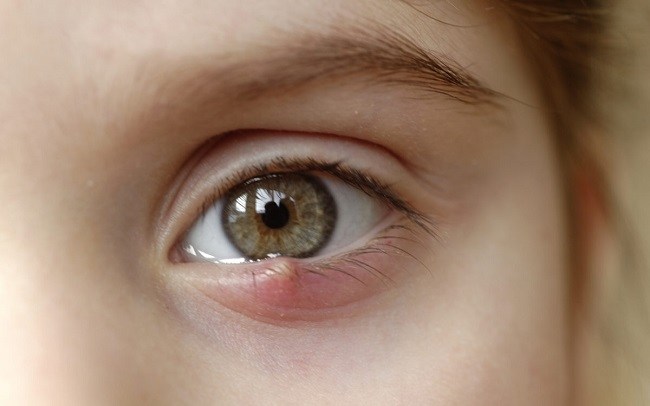
How to distinguish chalazion from barley
Both pathologies have painful swelling of the eyelid, its redness. That's where the similarities end.
-
Barley (gordelum) occurs against the background of infection of the eyelash follicle, it is always formed on the outer edge of the eyelid. After 2-3 days, a cavity with purulent contents appears in the center of the swelling. After a while, it is self-opened and then healed.
-
With chalazion, purulent contents are not observed, a reddish nodule forms in the thickness of the upper or lower eyelid. The pathology rarely resolves on its own, requires medical, physiotherapeutic treatment, and if a cyst occurs, surgical excision. If the inflammatory nodule is located on the inner surface, you can only see it by turning out the eyelid. Education can be of different sizes — the size of a pea, a grain of wheat, an olive.
Pathology occurs at different ages and has a recurrent character. Only a doctor can make a correct diagnosis and prescribe treatment. When a large size is reached, the formation begins to put pressure on the cornea, which is fraught with the development of astigmatism.
Signs of chalazion:
-
the appearance of a "ball" in the thickness of the eyelid;
-
the eyelid turns red and swells;
-
there may be a slight inflammation of the conjunctiva (the mucous membrane inside the eyelid and on the white of the eyeball);
-
soreness and feeling of sand in the eye;
-
Photosensitivity;
-
lacrimation with internal chalazion;
-
decreased vision with large or multiple chalazions.
During the transition to the chronic stage, the disease can last for years. The addition of pathogenic microflora contributes to the development of purulent inflammation — abscess. The skin above the chalazion turns red, hurts, swells, and feels worse. To prevent this, you need to start treatment in a timely manner.
Causes of chalazion formation
The meibomian glands located in the cartilage of the eyelid produce lipids (fat), which form the outer layer of the protective film of the eye. The lipid layer is necessary to preserve tears on the surface of the eye. Sometimes, there is a blockage of the excretory ducts of these sebaceous glands, as the discharge is too thick and cannot flow out of the gland. In this case, the gland begins to increase in size and excessive pressure inside this tissue leads to non-infectious inflammation. However, quite often, a bacterial infection can quickly join (more often staphylococcus, which lives on everyone's skin). Bacteria multiply inside the gland and chalazion appears on the eyelid.
Who gets chalazion more often?
Chalazion develops more often in adults than in children. In the presence of acne roseacea, the risk of the appearance and recurrence of chalazions is much higher. This disease affects the sebaceous glands not only of the face, but also of the eyelids. People with dry eye syndrome (which is almost 20% of the population) also develop halyazions more often. And the third group, who are more likely to develop halazion, are people with autoimmune diseases (allergies).
Diagnostics
An ophthalmologist makes a diagnosis based on a visual examination. If there are complaints of decreased vision, additional studies are carried out — visual acuity testing, fundus examination, etc. If the disease has a recurrent course with the addition of infections, the list of studies is expanded. A sample of the contents for analysis in case of chalazion is rarely taken — only if a substandard nature of the formation is suspected.
What should I do if a freeloader appears?
If chalazion does not go away on its own in 3-4 days, it is necessary to see an ophthalmologist. The doctor will check the condition of the eyelids and eyes and prescribe treatment with an antibiotic ointment and an anti-inflammatory drug to reduce inflammation. If the prescribed treatment does not help in full, the doctor will suggest a small operation – a small incision is made in the inflamed gland (under local anesthesia with a microsurgical instrument using a microscope) and the eyelid is cleaned. After the inflammation subsides (anti-inflammatory ointment is used for some time after the procedure) there are no traces of interference left.
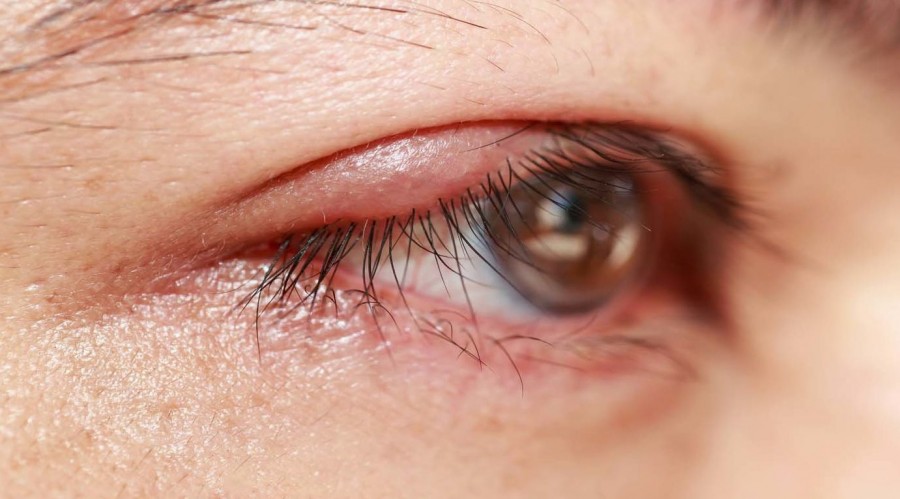
Indications for surgery:
-
Ineffectiveness of conservative therapy;
-
the diameter of the formation is more than 5 mm;
-
the neglected chalazion;
-
the presence of complications — the formation of an abscess;
-
the spread of inflammation to surrounding structures;
-
regular recurrence of the disease.
Laser removal of chalazion
An alternative to classical surgery is laser or radio wave procedure. The operation is performed on an outpatient basis, at any stage of the neoplasm development. Removal of the chalazion of the upper or lower eyelid is performed transconjunctively — without incisions of the eyelid.
-
The doctor uses a laser to dissect the capsule of education, removes the contents and the capsule itself by evaporation. In this case, the effect occurs exclusively at a given depth, removing only pathological tissues without injuring healthy structures.;
-
Laser exposure is accompanied by vascular coagulation, eliminating bleeding and the need for sutures. After the intervention, a small crust remains, which disappears on its own after complete healing of the surgical wound.
After the procedure, the patient goes home, and the next day he can safely start his usual business. Healing is faster than after traditional surgery. The rehabilitation period is almost non-existent. Care after the procedure is simple — do not wet the area of intervention, do not try to remove the postoperative crust on your own, and treat the operated area according to the doctor's recommendations.
Prevention of the development of chalazion
People with a high risk of developing chalazion should carefully observe eyelid hygiene – regularly clean the edges of the eyelids from the discharge 2 times a day (you can use, for example, special wipes) and treat concomitant diseases.
Balanced nutrition, strengthening the immune system, and avoiding infections are important in the prevention of upper or lower eyelid chalazion. Those who use contact lenses should change the antiseptic solution in a timely manner, and do not wear lenses for longer than the prescribed time.
Make an appointment for a consultation with for ophthalmologists of the EMC, please call +7 495 126-73-29 by filling outform on the website or by leaving a request in an online chat.
Types of chalazion
Depending on the degree of damage to the eyelid, ophthalmologists distinguish different types of chalazion:
-
It's superficial. It forms on the edge of the eyelid with inflammation of the sebaceous gland (Zeis) and is usually easily noticeable. It hurts less and goes away faster.
-
Deep. It is formed from the meibomian gland deeper in the tissues of the eyelid. It can be external, closer to the skin of the eyelid, or internal— closer to the conjunctiva. This formation is bigger, more painful, and takes longer to heal.
There is also a classification by location: upper or lower eyelid. In addition, formations can be single or multiple.
Chalazion does not appear all at once, but develops over some time. There are several stages of its formation:
-
The initial stage. The duct of the meibomian or sebaceous gland becomes clogged. There is a slight lump on the eyelid, which may be accompanied by itching and slight discomfort.
-
The stage of progression. The secret inside the gland accumulates and thickens, it stretches. The lump increases in size, and the eyelid may turn red and swell. Painful sensations are possible during this period.
-
The stage of maturation. A pseudocapsule is formed around the secret. The formation reaches its maximum size, the soreness persists or may decrease. When an infection is attached, chalazion can become inflamed.
After the final maturation, the inflammation begins to subside, the chalazion decreases in size and becomes less painful. In some cases, it may disappear completely or leave behind a small seal.
Treatment methods
The methods of treatment of chalazion can be both conservative and surgical.
Conservative treatment is indicated in the early stages, until the formation has reached 5 mm. The patient is prescribed ointments or drops to relieve inflammation. It is also necessary to strictly observe personal hygiene, it is advisable to temporarily abandon contact lenses. Sometimes injections of hormonal drugs (steroids) are used directly into the chalazion, which accelerates the disappearance of the formation.
Surgical treatment of chalazion is usually considered if conservative methods have not yielded results or when the formation has reached a large size. Surgical intervention is performed on an outpatient basis, without hospitalization. The doctor makes a small incision and removes the contents of the chalazion from its pseudocapsule. The operation can be performed using a scalpel, laser, or radio waves. Depending on the location of the chalazion, the incision can be inside the eyelid or outside.
Contraindications to surgical removal
Excision of chalazion is a gentle technique, but it still has contraindications. First of all, these are active infectious processes in the body, including acute conjunctivitis. Blood diseases associated with clotting disorders, such as hemophilia, are also a contraindication.
Patients with serious systemic diseases (diabetes, cardiovascular diseases, oncology) should discuss possible risks and complications with their doctor before deciding on surgery. The same applies to pregnant women.
Recovery after the procedure
Recovery after removal of chalazion is usually quick and painless. During the first 4 hours, the patient is recommended to wear a sterile pressure eye patch.
It is important to observe hygiene and avoid friction or pressure on the operated eyelid area. For the first 3-4 days, you can not exercise and go to the sauna, sauna, swim in the pool or water park. Also, you should not wet the area of intervention. The doctor prescribes drops and / or ointment with antibiotics in the postoperative period.
Question-answer
How long does the eye heal after surgery?
Full recovery usually takes 1-2 weeks.
Is it possible not to treat chalazion?
Over time, the formation may increase in size. Increased pressure on the eye tissue will not only cause discomfort, but can also lead to the development of various pathologies: conjunctivitis, diseases of the cornea, inflammation. Visual acuity may decrease. It is better to consult a doctor at an early stage of the disease and quickly cope with the pathology with the help of medications.
What does the eye look like after chalazion removal?
The eye looks as usual, there may be a slight swelling and redness of the eyelid in the area of surgery, sometimes hemorrhage, but these symptoms usually disappear after a few days.
Do I need to wear a bandage after surgery?
It depends on the doctor's recommendations, but usually the bandage is worn during the first 4 hours after surgery.
Why does the chalazion repeat itself?
Recurrence of the disease is possible due to increased sebum formation in the glands, chronic inflammation of the meibomian glands, improper eye hygiene, or other factors such as stress or hormonal changes.
Why the EMC
The first and only clinic in Russia, created in the image of the world's leading clinics
EMC is a multidisciplinary center offering patients a high level of medical services and a personalized approach
Worldwide recognition and awards
 Learn more
Learn more
Worldwide recognition and awards
 Certificates and licenses
Certificates and licenses
Make an appointment for a consultation
Specify your contacts and we will contact you to clarify the details
Reviews
and new products of the EMC
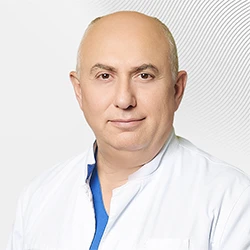
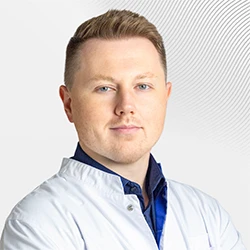
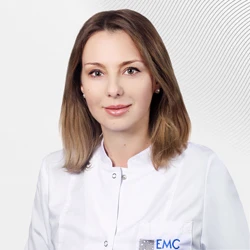
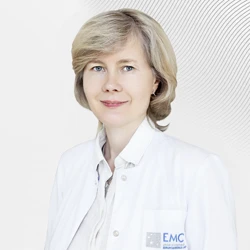
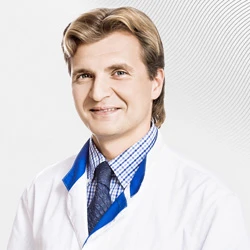
.webp)

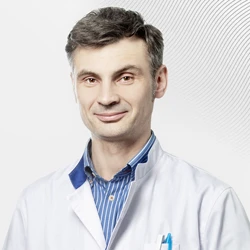
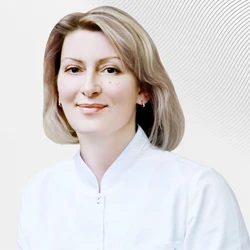
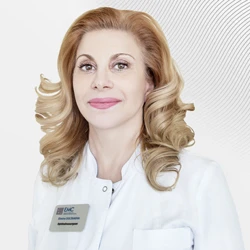
.webp)
